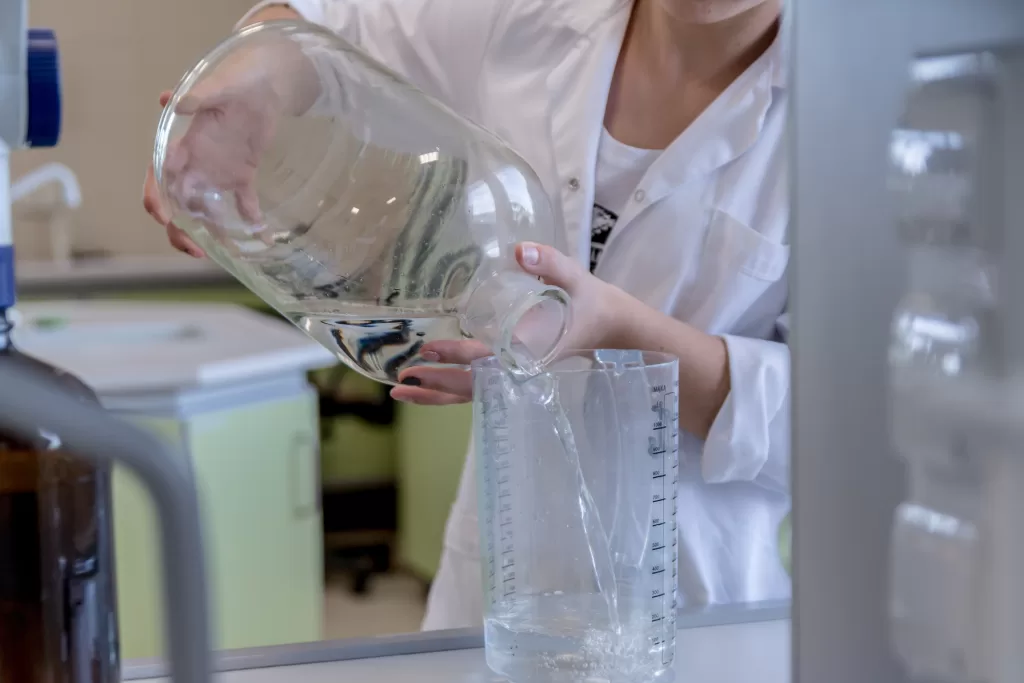Water quality can seem quite simple on the surface – literally – and yet there is a lot that goes into keeping it safe, accessible, and fresh-tasting. We know that looks can be deceiving, as even the most clear water can have a very tiny enemy lurking inside. Because water safety is at the very top of our basic survival needs, the moment we can no longer guarantee that we can access potable water is the moment that all other priorities become secondary.
Knowing that we can’t take our safe drinking water for granted means that the rules governing water safety are incredibly high and strict. To understand how we meet and exceed best practices in water safety, it’s best to be familiar with NSF and ANSI Standards, including NSF 42 water filters.
NSF and ANSI Standards
Established as the National Sanitation Foundation, NSF sets standards alongside ANSI, or the American National Standards Institute. Both organizations work to ensure that businesses that manufacture and sell water filtration systems are demonstrably able to remove particulates, including harmful chemicals, pollutants, germs, and other dangerous contaminants out of drinking water.
More specifically, NSF and ANSI alike set parameters around not only levels of impurities, but also on pH balance of our water, so it remains healthy for your consumption. A leading non-profit in testing and quality assurance for water safety, these organizations’ internationally recognized toxicology work also provide testing measures to ensure that both guesswork and business interests are left out of holding us accountable to your wellness.

How NSF/ANSI Standard 42 Applies to Water Filters
One of the biggest boosts to water safety came in 1972 under the “Safe Drinking Water Act.” In order to help hold this major law accountable, NSF and ANSI were created to provide third-party, objective standards and structures to any businesses in the water filters industry. NSF/ANSI Standard 42 specifically focuses on chlorine removal and related taste/smell issues. This quality control factor is applied both in terms of original filtration systems and all replacement filters, along with the quality of ingredients used and durability.
As an additional safety measure, the rules governing our NSF 42 water filters also include strict standards around limiting bacterial infection. This adds additional layers of assurance that your water filtration system will remain clean and safe as it provides the same for your tap water.

What NSF/ANSI Standards Mean For You
That we meet or exceed NSF/ANSI Standard 42 for water filters, and that we pass other rigid methods of testing (including NSF/ANSI 53) with annual requirements for certification, all point to our decades of experience in delivering on the highest levels of care for the safety and well-being of our customers. After all, we understand that what makes life worth living tends to come down to the simplest of things, from that warm bath, to that soothing cup of tea, to that delightfully cooked meal. This translates into our doing our utmost to help you provide the safest, freshest water you can for you and your loved ones.
Whether you want subtle, under-the-sink additions for your kitchen or bathroom, or you are looking to provide your entire household with state-of-the-art water filtration, we apply NSF/ANSI Standard 42 as just one part of our commitment to fulfilling our promise of better quality drinking water.
Other Hydrovos Options
Beyond Standard 42, NSF and ANSI offer a variety of additional certifications that can help you be a savvier consumer when it comes to which pollutants and particles you especially want to remove, and how you can best be assured that your investment makes good on its claims.
Shop to explore our options on Amazon, or contact us to help us find the best water filter systems for you, your life, and your budget!

